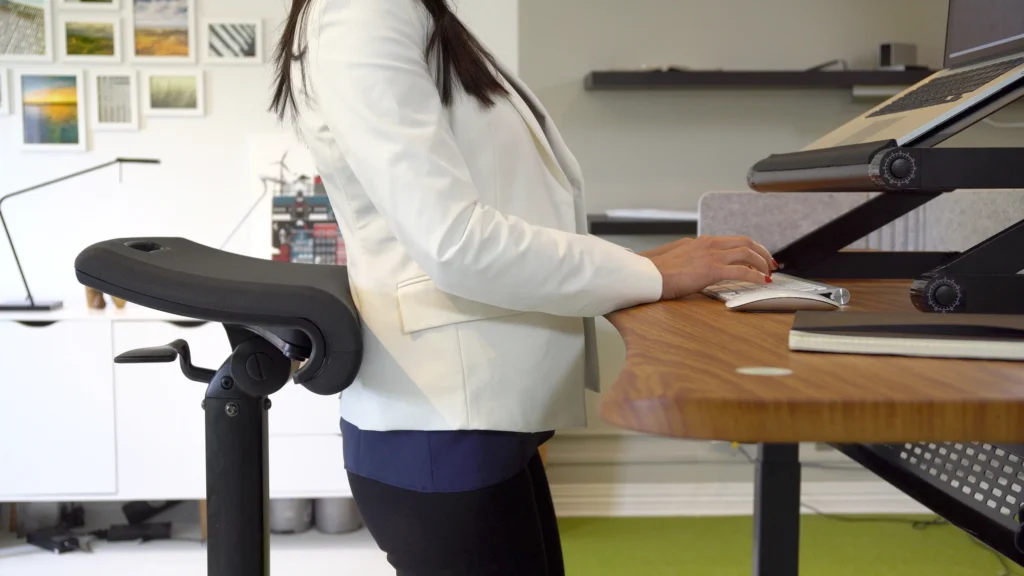Electric standing desks, sit stand desks, and height adjustable standing desks and performance are inevitably related, and for many individuals, they are the ideal work atmosphere imaginable. We’ll demonstrate how a standing desk may benefit your work environment.
Not only does a good workstation boost productivity, but it also helps to prevent various health problems. A standing desk by Oplan is an excellent technique to guarantee that you have a productive office.
We’ll show you how standing desks are ergonomic, how to use them effectively, and what benefits they provide. Here, it’s imperative that we mention the role of office desk chairs and grey desk chairs as well. They are offered at amazing prices by UX Office and you can buy desk chairs online.
Is it Ergonomic to Work at a Standing Desk?
The quick answer is that standing desks can improve your office’s ergonomics. All you have to do now is figure out how to make them work for you.
In its most basic form, ergonomics refers to the act of organising a workstation to suit the needs of the worker. Ergonomics strives to make employees’ workspaces more productive, pleasant, and safe. A standing desk allows you to embrace the postures your body is most suited for.
The following are some ergonomic principles:
- Working in a neutral and comfortable position
- Working at a comfortable height for your head, eyes, and arms is essential.
- Being able to move and stretch regularly
- Stance yourself in a neutral position as you work.
- Maintain items at a location where they are easily accessible.
- Reduce the amount of fatigue produced by static loads.
- Reduce the number of unneeded motions.
- Reduce the use of excessive force.
These concepts essentially state that to optimise your workplace, you must ensure that your body is in a natural position while working. To reduce excessive strain on your back and neck, ensure your computer and workstation or standing desk are the right height for your eyes.
Finally, you must be able to move about and stretch during your working hours. Staying in one posture for an extended period might be damaging to health.
When a standing writing desk is used properly, it might be an excellent ergonomic addition. It is because, unlike a standing desk, it pushes to move about more. Standing workstations make it easy to walk about and stretch during the day.
Standing desks allow your body to naturally extend out. In contrast to sitting workstations, where your limbs are frequently constrained, standing desks allow you to move about freely.
When it comes to productivity, standing encourages employees to be more aware and focused on their work. Standing desks are particularly efficient for an ergonomic workplace because of these features.
If you decide to use a standing desk, keep in mind that the correct ergonomic setup is critical. It is critical to ensure that the workstation fits the user’s demands while standing and sitting.
Standing desks are the epitome of ergonomics. Here’s how to do it: You may retain your body’s natural bend in the spine by lifting your work table to waist level. Because you’re not hunched over all day, this decreases back pain and weariness. It also activates additional muscles (including those in the belly and buttocks), allowing you to burn more calories even when you’re not exercising. You’re less likely to feel stiff at a standing desk since you can move around more readily.
Height of the standing desk
First and foremost, you must adjust the desk’s height. The height of your standing desk should be the same as your elbows. It implies that when you’re at your computer, your forearms should be parallel to the ground.
The goal is to keep your arms, hands, and neck as still as possible as you work. Your forearms should be allowed to rest comfortably on the desk.
Height of the monitor
Next, double-check that your screen’s monitor is properly set up. Your computer monitor’s top should be level with your eyes. The monitor’s top should be slightly angled backwards (about three or five centimetres backwards).
The goal is to eliminate the need for you to bend your neck to view or type. Long durations of tilting your head put a lot of strain on your neck muscles.
Additional Advantages of Standing Desks
Standing desks lower your risk of diabetes, heart disease, and weight gain, but they also minimise the back discomfort that many office workers face.
Standing desks are also well-known for increasing workplace productivity. According to studies, people who work at a standing desk perform significantly more work daily. They make working at a computer more tolerable for employees.
Conclusion
Overall, standing desks are a good investment. Use a standing desk to get both physical and mental benefits.

